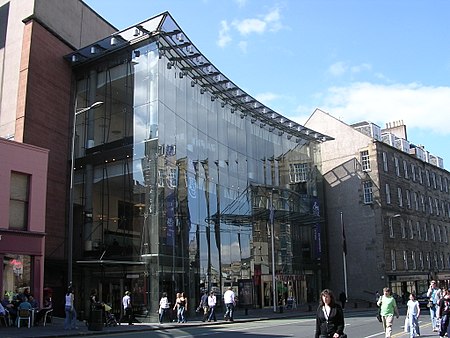Edinburgh Festival Theatre
1830 establishments in ScotlandCategory B listed buildings in EdinburghOpera houses in ScotlandReportedly haunted locations in EdinburghTheatres completed in 1892 ... and 2 more
Theatres in EdinburghUse British English from July 2015

The Edinburgh Festival Theatre (originally Empire Palace Theatre and later shortened to Empire Theatre) is a performing arts venue located on Nicolson Street in Edinburgh, Scotland. It is used primarily for performances of opera and ballet, large-scale musical events, and touring groups. After its most recent renovation in 1994, it seats 1,915. It is one of the major venues of the annual summer Edinburgh International Festival and is the Edinburgh venue for the Scottish Opera and the Scottish Ballet.
Excerpt from the Wikipedia article Edinburgh Festival Theatre (License: CC BY-SA 3.0, Authors, Images).Edinburgh Festival Theatre
Nicolson Street, City of Edinburgh Southside
Geographical coordinates (GPS) Address Phone number Website External links Nearby Places Show on map
Geographical coordinates (GPS)
| Latitude | Longitude |
|---|---|
| N 55.9467 ° | E -3.1861777777778 ° |
Address
Festival Theatre
Nicolson Street 13 / 29
EH8 9FT City of Edinburgh, Southside
Scotland, United Kingdom
Open on Google Maps









